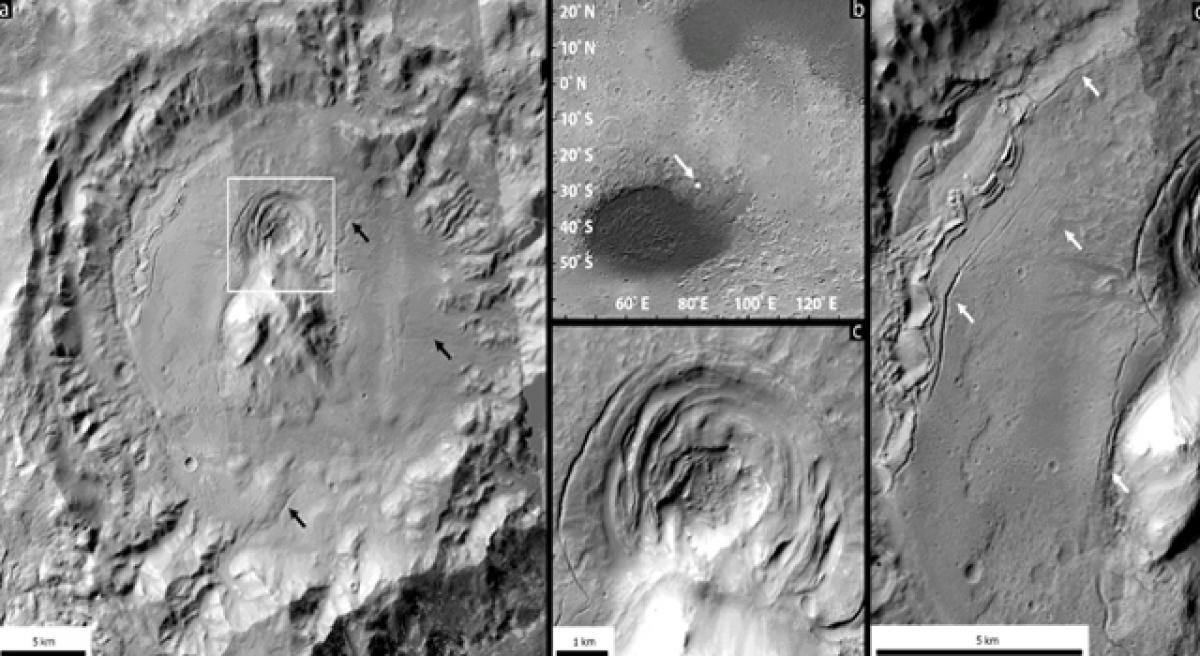Live
- A Guide to Temperature and Humidity Standards in Data Center Server Rooms
- Gadwal collector briefs on details of voters
- Jupally Krishna Rao takes part in Alampur rallu
- Bharath Prasad files 3rd Nomination
- Baisakh Month: A Time of Auspicious Beginnings and Sacred Festivals
- Oust BJD govt for overall development, says Shah
- Unveiling the Hidden Gems: Surprising Health Benefits of Garlic Peels
- Overcoming Sleep Struggles: A Comprehensive Guide to a Restful Night
- RTC bus hit the auto
- MLA Kuchukula Rajesh Reddy participated in the Birappa festival
Just In

We were drawn to this site because it looked like it could host some of the key ingredients for habitability -- water, heat and nutrients,\" said lead author Joseph Levy from University of Texas at Austin.
Washington : A funnel-shaped depression on Mars could be a new place to look for signs of life on the Red Planet, a study says.The depression was probably formed by a volcano beneath a glacier and could have been a warm, chemical-rich environment well suited for microbial life.
We were drawn to this site because it looked like it could host some of the key ingredients for habitability -- water, heat and nutrients," said lead author Joseph Levy from University of Texas at Austin.
The depression is inside a crater perched on the rim of the Hellas basin on Mars and surrounded by ancient glacial deposits. It first caught Levy's attention in 2009, when he noticed crack-like features on pictures of depressions taken by the Mars Reconnaissance Orbiter that looked similar to "ice cauldrons" on Earth, formations found in Iceland and Greenland made by volcanos erupting under an ice sheet.
The researchers Another depression in the Galaxias Fossae region of Mars had a similar appearance."These landforms caught our eye because they're weird looking.
They're concentrically fractured so they look like a bulls-eye. That can be a very diagnostic pattern you see in Earth materials," said Levy, who was a postdoctoral researcher at Portland State University when he first saw the photos of the depressions.
But it was not until this year that he and his research team were able to more thoroughly analyse the depressions using stereoscopic images to investigate whether the depressions were made by underground volcanic activity that melted away surface ice or by an impact from an asteroid.
The big contribution of the study was that we were able to measure not just their shape and appearance, but also how much material was lost to form the depressions," Levy said.
The analysis, published in Icarus, the International Journal of Solar System Studies, revealed that both depressions shared an unusual funnel shape, with a broad perimeter that gradually narrowed with depth.
After testing formation scenarios for the two depressions, researchers found that they probably formed in different ways. The Hellas depression and, to a lesser extent, the Galaxias Fossae depression, should be kept in mind when looking for habitats on Mars, Levy said.

© 2024 Hyderabad Media House Limited/The Hans India. All rights reserved. Powered by hocalwire.com







